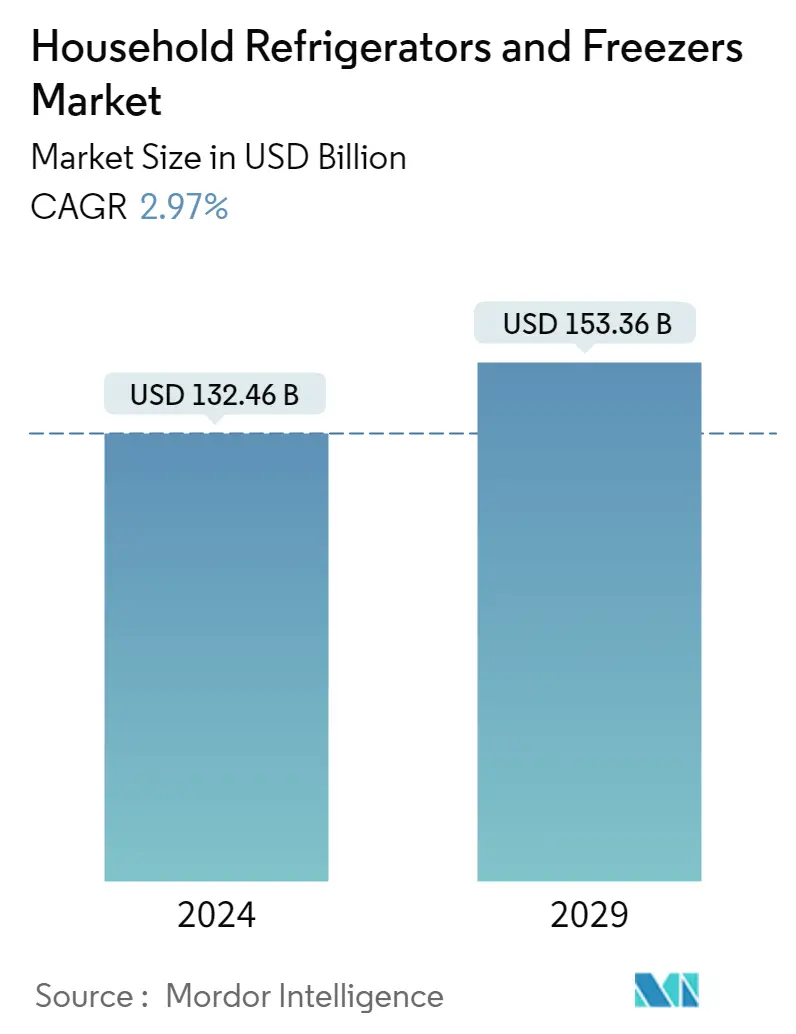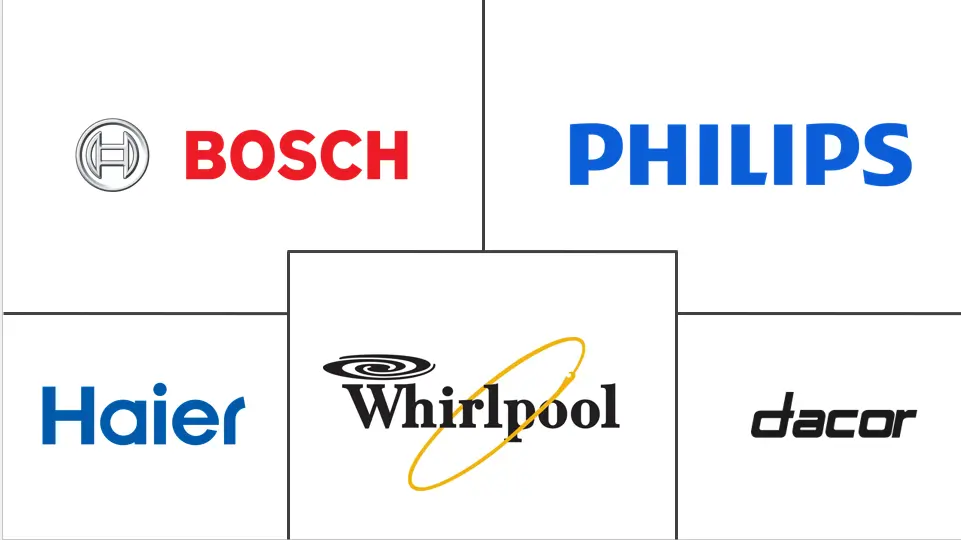Market Size of Household Refrigerators and Freezers Industry

| Study Period | 2019-2028 |
| Market Size (2023) | USD 128.64 Billion |
| Market Size (2028) | USD 148.94 Billion |
| CAGR (2023 - 2028) | 2.97 % |
| Fastest Growing Market | Asia Pacific |
| Largest Market | North America |
Major Players
*Disclaimer: Major Players sorted in no particular order |
Need a report that reflects how COVID-19 has impacted this market and its growth?
Household Refrigerators & Freezers Market Analysis
The Household Refrigerators And Freezers Market size is estimated at USD 128.64 billion in 2023, and is expected to reach USD 148.94 billion by 2028, growing at a CAGR of 2.97% during the forecast period (2023-2028).
The pandemic at the start of 2020 altered the market's fundamental dynamics. Product sales fell in the first months of 2020 due to temporary production halts in the manufacturing industry and a slowdown in the logistics sector. However, enforcing stay-at-home rules to reduce the virus's communal spread presented prospects for company expansion. Several countries worldwide relaxed lockdown regulations in the last quarter of 2020, resulting in a reduction in refrigerator and freezer manufacturing. In addition, the restart of shipping operations and the relaunch of e-commerce websites resulted in steady appliance sales growth.
The appliance has become a daily need in many families throughout the world. Because of the fierce competition in the market, manufacturers have been forced to upgrade their goods to keep customers interested and urge them to replace their old refrigerators with contemporary ones. The unprecedented demand for refrigeration technology in the 1950s sparked innovations such as the automated defrost feature and more giant freezers. Since then, new technological and design developments have replaced traditional units, providing the market endless potential.
Over the last few years, product innovation has played a positive role in driving the market growth. Modern refrigeration technology blends design aesthetics, energy efficiency, and temperature control to keep food from deteriorating. Compressor technology advancements and more excellent insulation also aid in driving demand for cutting-edge refrigeration equipment. Furthermore, new developments allow for manual temperature adjustment in the refrigerator, as different commodities require different thermal conditions and humidity scales to extend their shelf life.
